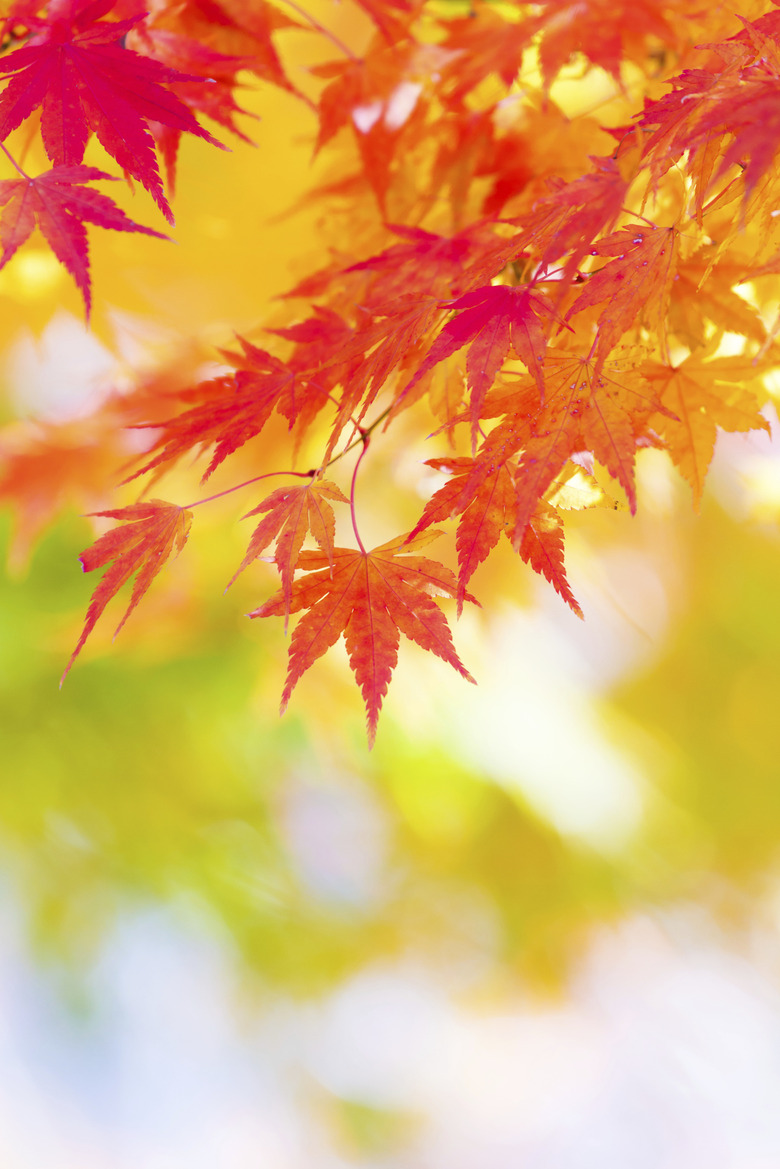Soil Types In Temperate Deciduous Forests
The temperate deciduous forest, or TDF, is a biome — that is, a distinct and well-defined community of living things — in which perhaps the most striking feature is the sharp change in leaf color in the fall. "Deciduous" means "falling off" — in this case, in a certain season — and "temperate" means "mild".
Accordingly, temperate deciduous forests are found chiefly in the eastern half of the U.S., much of Europe, eastern Asia, the southern tip of South America, eastern Australia, and New Zealand. Temperate deciduous forest soil needs to be nutrient dense in order to support the plant life found there.
Temperate Deciduous Forest Characteristics
Temperate Deciduous Forest Characteristics
Deciduous trees, unlike evergreens, start to lose their leaves in late fall and shed them completely at the onset of winter, passing into a period of dormancy until spring. In early autumn, as the amount of sunlight in each day becomes smaller and smaller, the trees withdraw chlorophyll from their leaves, causing them to turn various shades of gold, orange and red. Examples of deciduous trees include:
- Various species of maple
- The Ohio buckeye
- The horse chestnut
- The American ash
- The paper birch
- The hackberry
- The yellowwood
- The cottonwood
- Etc
While you can find some evergreen trees within these forests, like pine trees and other conifers, the majority of the tree life in these areas consists of those types of deciduous trees.
Temperate Deciduous Forest Biome Zones
Temperate Deciduous Forest Biome Zones
The temperate deciduous forest includes five recognized layers, or zones, each of which features different types of vegetation, from larger to smaller.
The first zone is the tree stratum, 60 to 100 feet high and containing maple, ash, elm, beech and other trees. The second zone is the sapling or small-tree layer, home to plants such as shadbush and dogwood. The third is the shrub layer, where you'll find rhododendron, azaleas, mountain laurel and huckleberries. The fourth zone is the herbal layer, housing a few spring boomers. Finally, the fifth zone, the ground layer, includes lichens and mosses.
Read more about the plants and animals in the deciduous forest.
Alfisols: A Nourishing Soil
Alfisols: A Nourishing Soil
Under the American soil taxonomy system that includes 12 different soil types, most of the stateside temperate deciduous forests give rise to alfisols, or brown-forest soils. Alfisols, which can be found in most of the U.S. but are concentrated especially in the Midwest, support 17 percent of the world's population. That amounts to over a billion people.
These are moderately leached soils. They're considered to have high fertility, which makes sense given that maple trees and the other broad-leafed species that pepper temperate deciduous forests demand a lot of nutrients in order to grow and thrive. Their high fertility is enhanced by the fact that temperate deciduous forests by definition sit in mild climates with favorable weather for most of the year.
The leaves that fall from these trees along with other dead organisms enrich the soil with nutrients, which returns matter and nutrients back into the soil and other trees/plants in the area. This allows the forest to maintain the alfisols nutrient-density.
Ultisols: King of the Southeast
Ultisols: King of the Southeast
Ultisols, like alfisols, support a high fraction of the planet's population — around 18 percent. But these are warmer-weather soils, and hence sit chiefly in the U.S. Southeast, ranging from northern Florida west to about Louisiana and north into Pennsylvania.
They tend to be reddish or yellowish, owing to a high content of oxidized iron. Although nourishing, they have been degraded to a large extent as a result of the kind of farming done in the Southeast between Colonial times in the 18th century and the Civil War in the mid-1800s.
Cite This Article
MLA
Crystal, Mike. "Soil Types In Temperate Deciduous Forests" sciencing.com, https://www.sciencing.com/soil-types-temperate-deciduous-forests-7489160/. 29 July 2019.
APA
Crystal, Mike. (2019, July 29). Soil Types In Temperate Deciduous Forests. sciencing.com. Retrieved from https://www.sciencing.com/soil-types-temperate-deciduous-forests-7489160/
Chicago
Crystal, Mike. Soil Types In Temperate Deciduous Forests last modified March 24, 2022. https://www.sciencing.com/soil-types-temperate-deciduous-forests-7489160/
